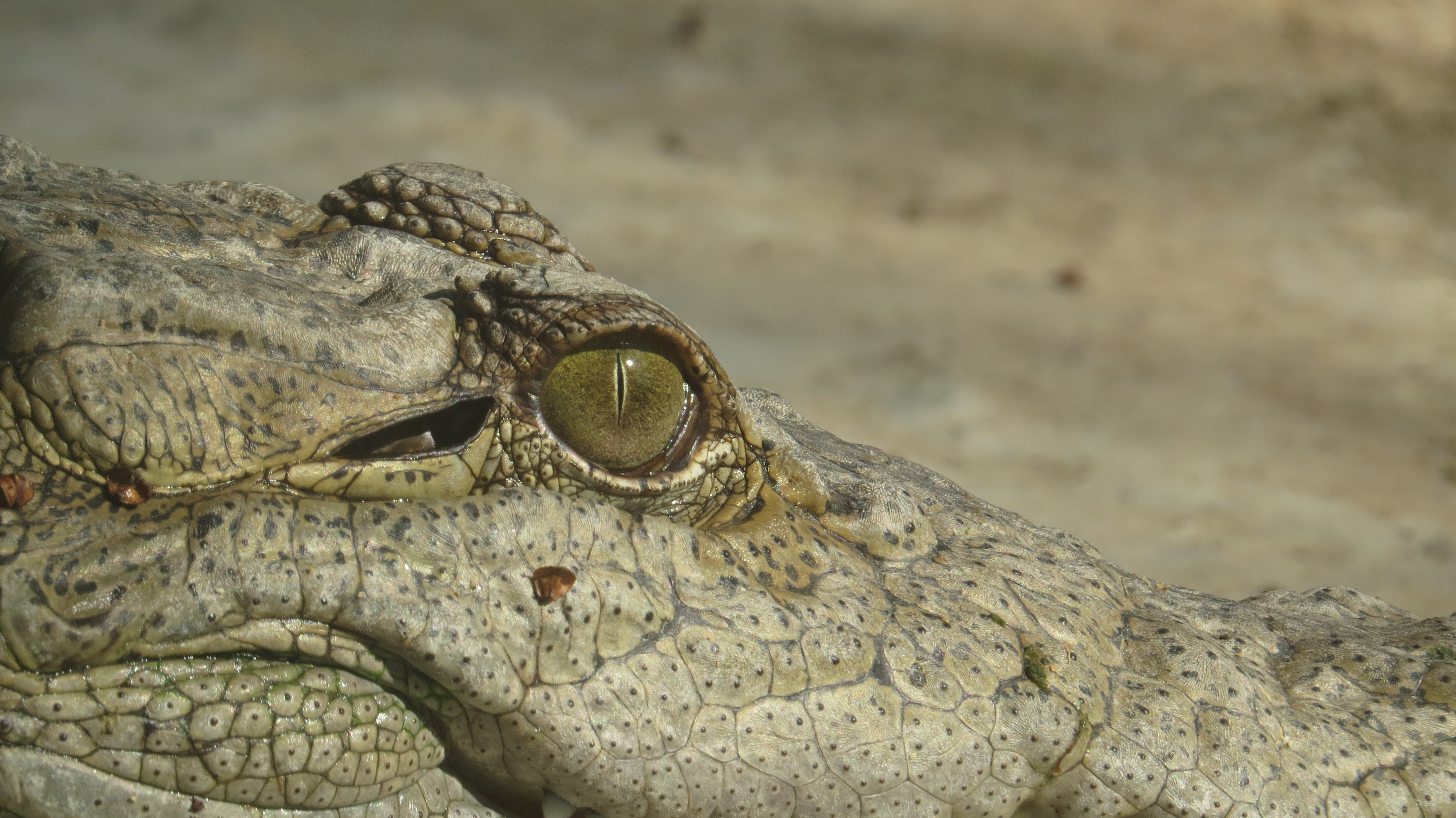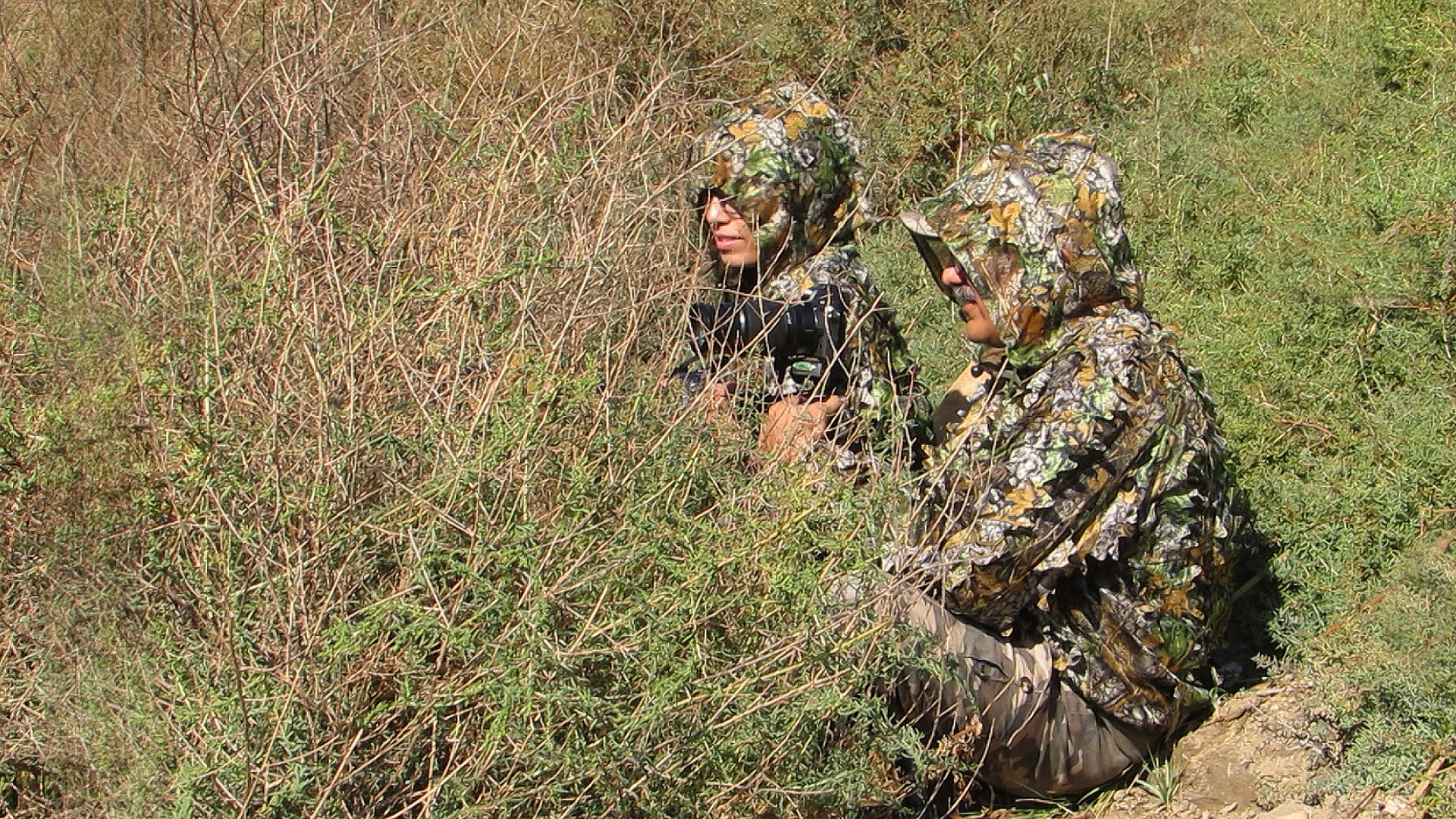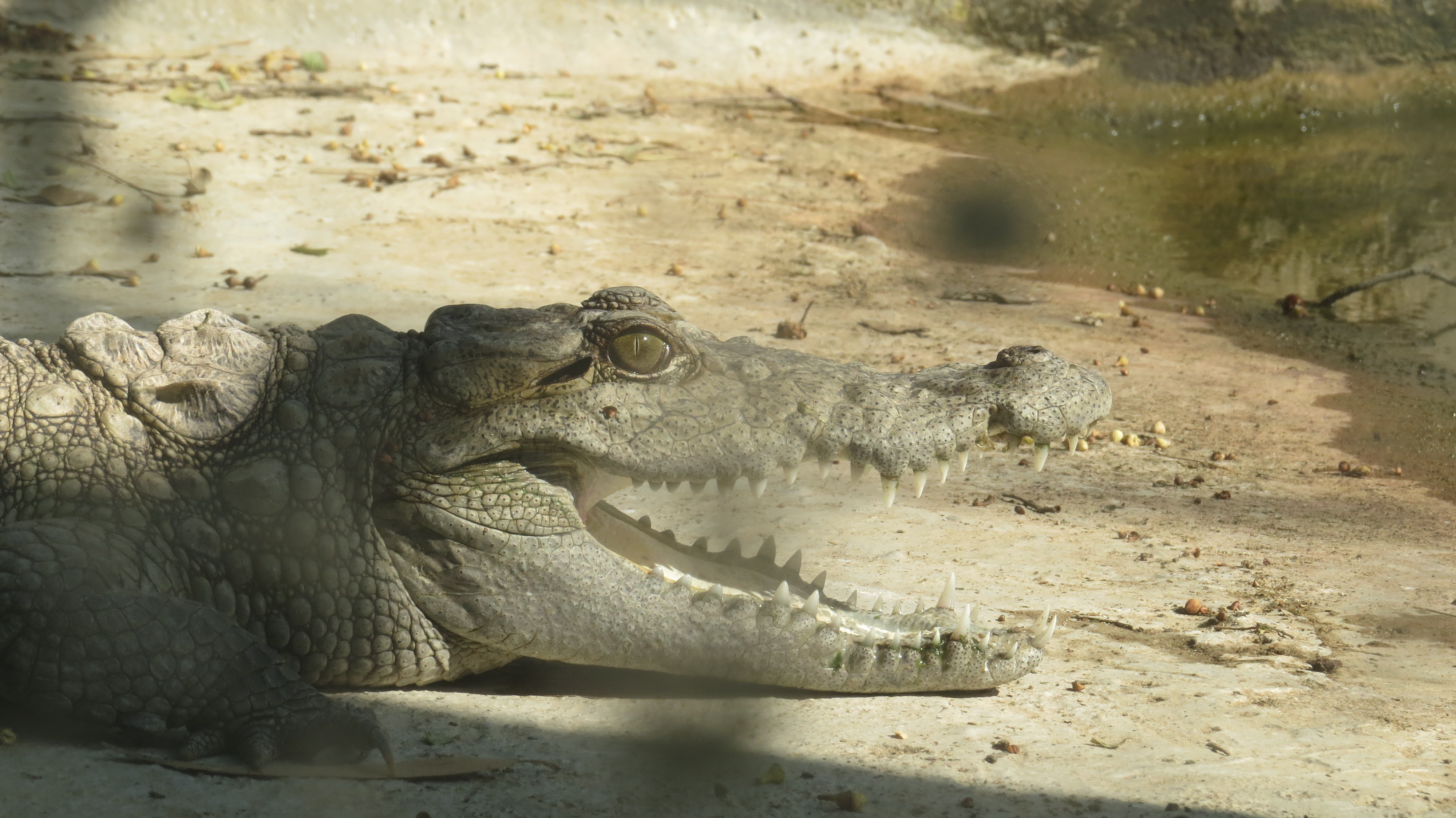Given the abundance of rich bird life that prevails, and crocodiles that have been residents of Haleji Lake since quite a few decades, the lake is a second home to us wildlife photographers and filmmakers. After much deliberation and research, we decided to work on a documentary on these marsh crocodiles, also known as mugger crocodiles.
As we walked in the lake vicinity on a fine winter morning, we soaked ourselves in the morning light from the rising sun among scattered clouds. The eerie tranquility of the lake was spellbinding in its own stillness as if it were a mirror that is home to over 200 crocodiles and an attraction to many local and migratory birds. It has its own way of charming the birders among us.
Haleji Lake which is a Ramsar site, has an interesting history. Up until the 1930s and during World War II, it was a saline lagoon which was converted into a water reservoir to serve the needs of the British troops stationed there. Later, the lake gained much significance as migratory birds started directing their route toward this wetland and was declared a wildlife sanctuary in 1977.
The marsh crocodiles of Haleji Lake have quite a remarkable history. According to historical facts, the government conducted a survey on crocodiles in the 70s, which revealed that they had neared extinction in the River Indus. The situation prompted rehabilitation efforts and one of the steps taken was to gather seven crocodiles from riverbeds and introduce them into the lake where none existed before. From seven to over 200, they seem to have reproduced, never to become extinct again! Considering the fact that they are naturally shy and avoid boisterous spots, you will not find them near the areas usually frequented by picnickers.

These crocodiles are medium-sized and broad snouted reptiles that thrive in freshwater habitats ranging from southern Iran to the Indian subcontinent. According to a surprising fact, a freshwater crocodile’s bite is known to be the strongest of all animals that is 5,000 pounds per square inch. Compare this with a human jaw strength which is only 100 pounds per square inch.
We ascertained the spontaneity and ferociousness of a baby crocodile which is a rescue animal housed in the glass enclosure managed by officials at Haleji. When provoked by the helper, the three-foot crocodile was quick to jump in a split second and its guttural vocalisation and petrifying growl seemed to haunt us for the rest of our trip.
Marsh crocodiles were once the residents of the entire River Indus, though now their abode is some water bodies connected with central Sindh. Among these are Ghotki, Chotiari, Nara Canal, Mirpurkhas, and of course, Thatta’s Haleji Lake. These reptiles have also reached as far as Balochistan’s water bodies through rainwater streams connected with the province. They can now be found in and around Hub Dam and Hingol River.
One interesting observation we made was the fact that contrary to the human caretakers or villagers around, these reptiles have sparkling white teeth. It’s an irony when crocodiles seem to have better oral hygiene than humans and it’s visible as well!

There is a floating plank around the marshy-island like area in the centre of the lake where an adult crocodile basks in the sun, with its mouth opened for smaller birds to pluck out the remaining food and floss away. Unfortunately, our first trip saw none as it turned out to be a game of hide and seek. Mubarak, one of the villagers took us to the crocodile’s location in the boat and waded through the 17-foot-deep water using a large bamboo stem. As we journeyed through the dry reeds and marshes, the temporary solitary confinement gently embraced us into a peaceful abyss, but for some urbanised folks, it was nothing less than the claustrophobic throes which they convulsed in, desperately wanting to get out. But out where? In the crocodile haven, with some smiling deep inside or hiding just below the marshes, it was therefore in everybody’s interest to try to enjoy the moment. Anyway, we returned without meeting Mr. Croc, much to the relief of any wild imagination in which case a telephoto lens is your best friend.
As we emerged from this conquest and walked ahead, we were greeted by a spotted owlet family of three owls whose nest was destroyed a couple of months ago in the name of development. The large cavity in a decades old tree was home to these birds who still wander among the same group of trees trying to make peace with the ghost of their residence. Among other birds such as the yellow-footed green pigeon, the black-rumped flameback woodpecker, greater coucal, blue throat, cormorants, herons, the three types of kingfishers etc., the birds, the size of your palm and with big, bright eyes, should not be missed when visiting the lake,
The ultimate moment of truth is when you get to watch a kingfisher or any other bird for that matter, hammering the hunted fish against the tree branch before swallowing it whole. Also, if you’re lucky, you might find the camouflaged scops owls in one of the trees around the guest houses. As you go farther along the circumference of the lake, towards the wilderness, beware of how the discreet golden jackals stun you with their sudden sighting, while some people confuse these with dogs. There have been moments when we have called these canidae to turn around for a shot which we nearly missed and they do turn around before vanishing away.
 Not finding the crocodile on its floaty, the wooden plank gave us a reason to revisit the lake for the same purpose – the documentary which turned out to be an outcome of extreme patience and dedication. We had to camouflage ourselves in the ghillie suits and ensured absolutely no movement, especially while photographing birds. Much to our surprise, we couldn’t identify ourselves and couldn’t tell ourselves apart from bushes when we saw photos in the post-processing phase.
Not finding the crocodile on its floaty, the wooden plank gave us a reason to revisit the lake for the same purpose – the documentary which turned out to be an outcome of extreme patience and dedication. We had to camouflage ourselves in the ghillie suits and ensured absolutely no movement, especially while photographing birds. Much to our surprise, we couldn’t identify ourselves and couldn’t tell ourselves apart from bushes when we saw photos in the post-processing phase.
Shooting for a documentary on crocodiles was a test of our wits, yet the cool temperature was of much help as we sat and waited for the lazy, seemingly immobile reptiles to even turn or blink their eyes. One of our senior birders who had initially joined made a swift exit at the sheer boredom caused by the level of patience demanded.
The crocodiles that reside in Haleji Lake have a lifespan of up to 70 years, they eat fish and turtles which are easily available in the water, as well as waders, so it won’t be surprising if one fine afternoon, you see a crocodile munching an egret. These animals prefer to live in murky waters and sometimes even attack quadruples that come to quench their thirst along the lakeshore.
Since the past few years, the lake is not being provided with fresh water due to administrative disputes and as a result, it has become quite polluted. Eventually, this benefits these crocodiles while they’re increasingly becoming a threat for the surrounding population of human residents and their livestock. As such, incidents of attacks are being reported since quite some time and can further become alarming with raised water levels post rains.
Our last trip to Haleji Lake turned out to be immensely fruitful as we conversed with spotted owlets and gathered substantial footage. Who knows, the next documentary could be centred on these birds. For now, the documentary on marsh crocodiles can be viewed on the Youtube channel, ‘Sindh Wildlife Club’.
_____________________________________________________________________________________
Heba Moeen is a PR and communication professional, an artist, and a wildlife photographer. She can be reached at moeen.hiba@gmail.com
Ahmer Ali Rizvi is a sales and marketing professional who works on wildlife documentaries. He can be reached at ahmeralirizvi@gmail.com
All facts and information are the responsibility of the writers
